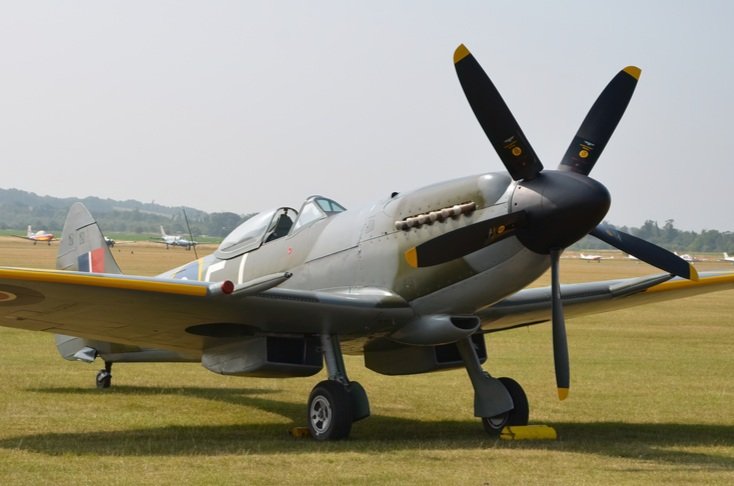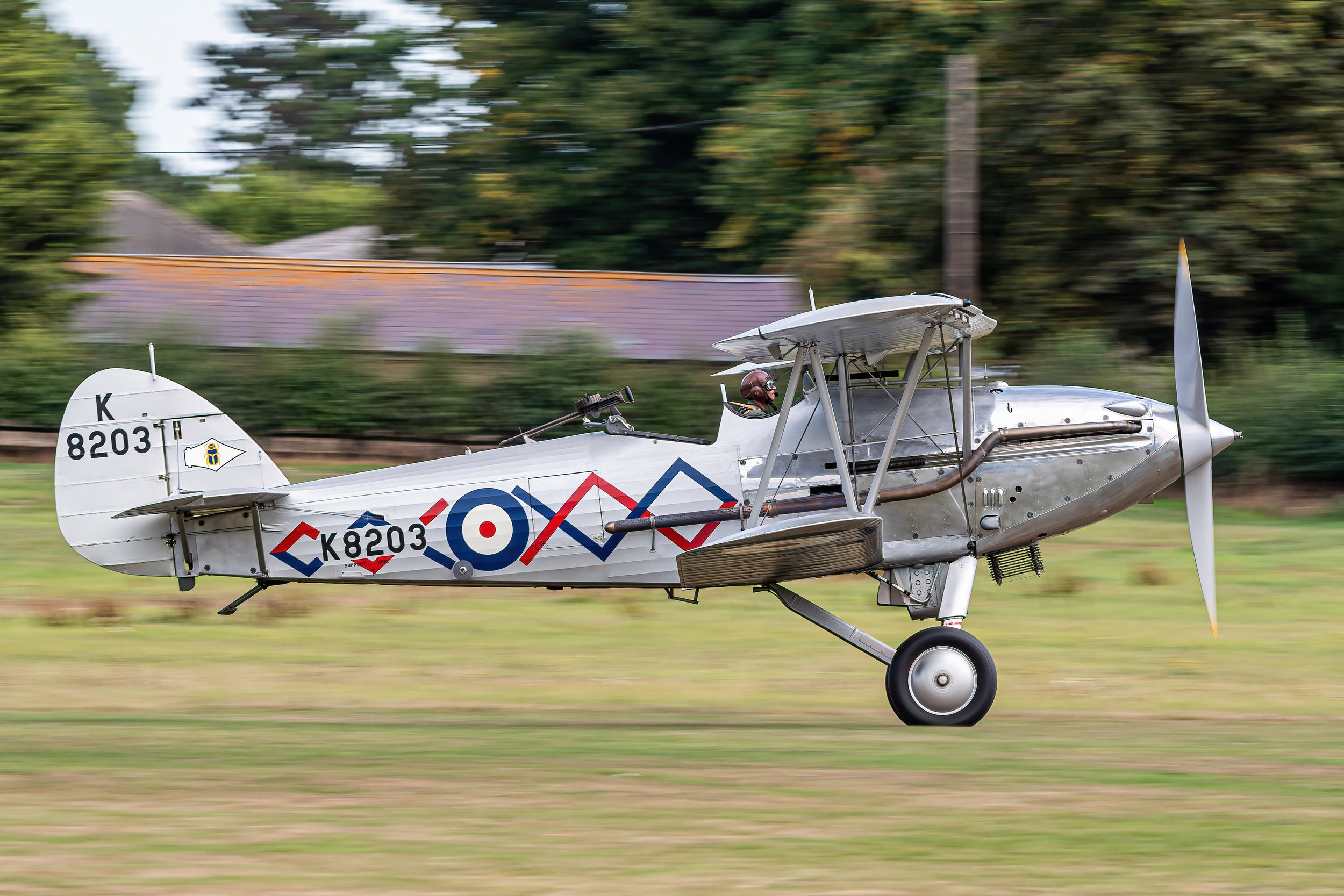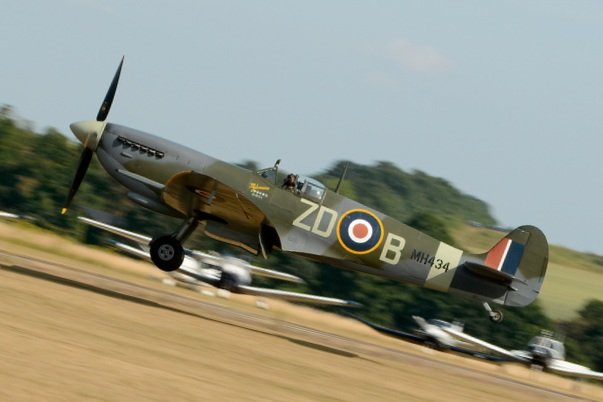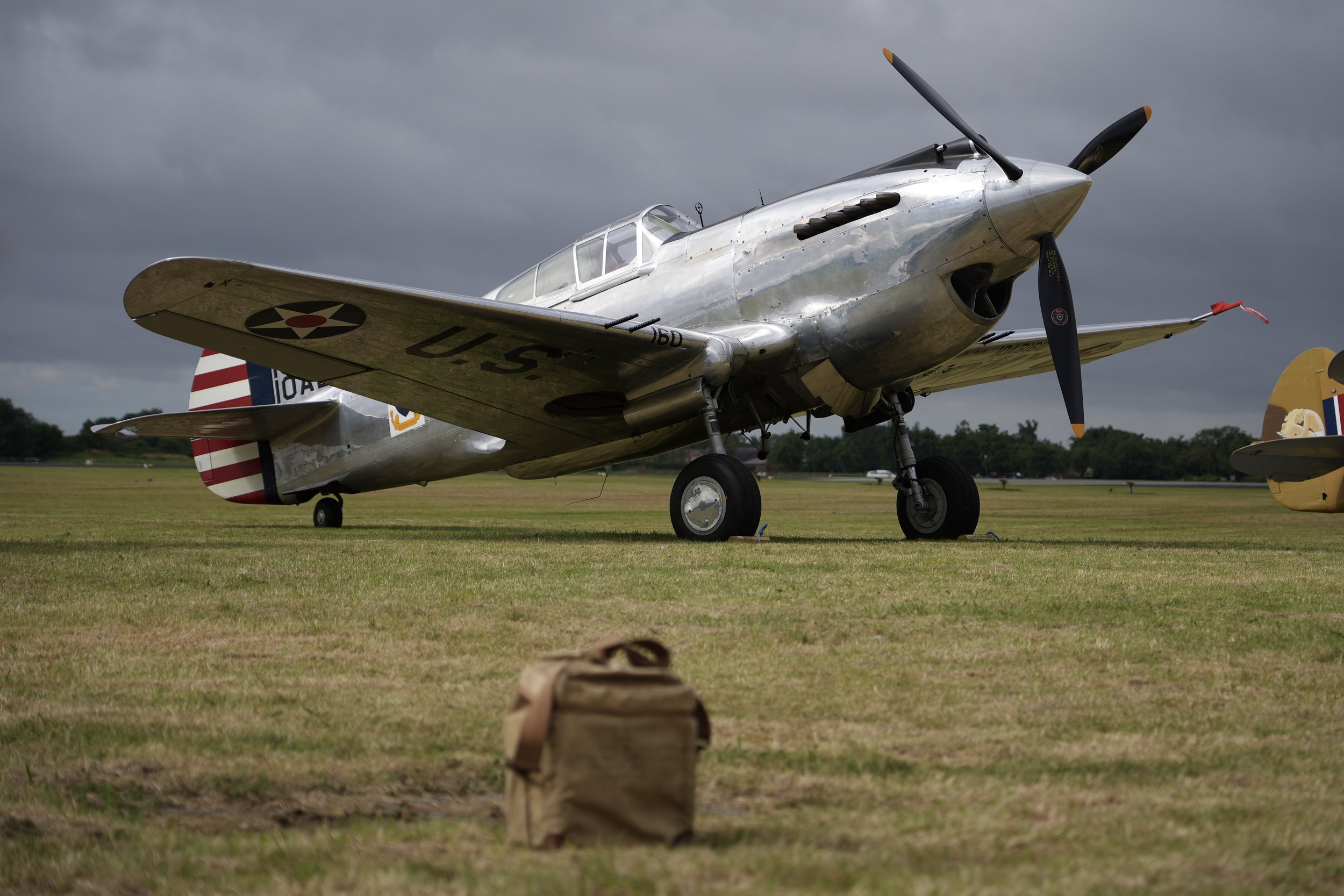Hurricane LF363
Year built
1943
Aircraft
Hurricane IIC
Base
RAF Coningsby
Hurricane LF363 was built as a cannon-armed Mk IIC at the Hawker Aircraft factory at Langley, near Slough in Berkshire, during the latter part of 1943. The aircraft’s first flight, an air test, was completed on New Year’s Day, 1st January 1944. Hurricane LF363 served operationally with the RAF during World War Two on coastal shipping protection and air defence patrols off the east coast of Scotland, and other second-line duties. In 1948 LF363 was sent, probably for scrapping, back to Hawkers at Langley. Fortunately, it was saved from that fate, not least by the intervention of the Air Officer Commanding No 11 Group, Air Vice-Marshal Sir Stanley Vincent CB DFC AFC. LF363 was subsequently held and maintained, rather unofficially, by a series of front-line squadrons and Station Flights between 1949 and 1956, flying on ceremonial occasions such as leading the Battle of Britain flypasts in London each year. In July 1957, after a major re-fit at Hawkers, LF363 became a founding aircraft of the RAF Historic Flight, the forerunner of the BBMF, when the Flight was inaugurated at Biggin Hill.
| Back to Top |
Hawker Hurricane IIC
The Hawker Hurricane is a British single-seat fighter aircraft of the 1930s–40s that was designed and predominantly built by Hawker Aircraft Ltd. for service with the Royal Air Force (RAF). It was overshadowed in the public consciousness by the Supermarine Spitfire's role during the Battle of Britain in 1940, but the Hurricane inflicted 60 percent of the losses sustained by the Luftwaffe in the engagement and fought in all the major theatres of the Second World War.
The Hurricane originated from discussions between RAF officials and aircraft designer Sir Sydney Camm about a proposed monoplane derivative of the Hawker Fury biplane in the early 1930s. Despite an institutional preference for biplanes and lack of interest from the Air Ministry, Hawker refined their monoplane proposal, incorporating several innovations which became critical to wartime fighter aircraft, including retractable landing gear and the more powerful Rolls-Royce Merlin engine. The Air Ministry ordered Hawker's Interceptor Monoplane in late 1934, and the prototype Hurricane K5083 performed its maiden flight on 6 November 1935.
In June 1936, the Hurricane went into production for the Air Ministry; it entered squadron service on 25 December 1937. Its manufacture and maintenance were eased by using conventional construction methods so that squadrons could perform many major repairs without external support. The Hurricane was rapidly procured prior to the outbreak of the Second World War in September 1939, when the RAF had 18 Hurricane-equipped squadrons in service. The aircraft was relied on to defend against German aircraft operated by the Luftwaffe, including dogfighting with Messerschmitt Bf 109s in multiple theatres of action.
The Hurricane was developed through several versions, into bomber-interceptors, fighter-bombers, and ground support aircraft as well as fighters. Versions designed for the Royal Navy known as the Sea Hurricane had modifications enabling operation from ships. Some were converted as catapult-launched convoy escorts. By the end of production in July 1944, 14,487 Hurricanes had been completed in Britain, Canada, Belgium and Yugoslavia.
Hurricane Mk IV was the last major change to the Hurricane. It included the introduction of the "universal Wing", a single design able to mount two 110 or 230 kg bombs, two 40 mm Vickers S guns, drop tanks or eight "60 pounder" RP-3 rockets. Two 7.7 mm Brownings were fitted to aid the aiming of the heavier armament. Despite persistent reports actually fitted with the same Merlin XX as the mark II. All Merlin 27 were modified to Merlin 25 and used in Mosquitoes, there were only 16 production Merlin 24 by the time over 300 mark IV had been delivered. The individual aircraft cards held by the RAF museum reports the final mark IV had Merlin XX. The radiator was deeper and armoured. Additional armour was also fitted around the engine. 524 was built by Hawker between December 1942 and March 1944.
| Back to Top |







| Back to Top |

































